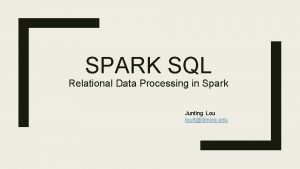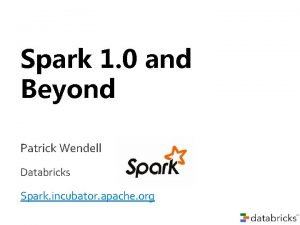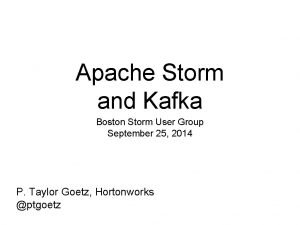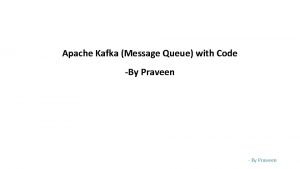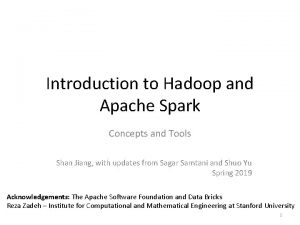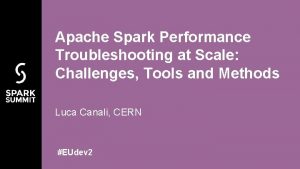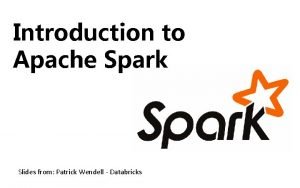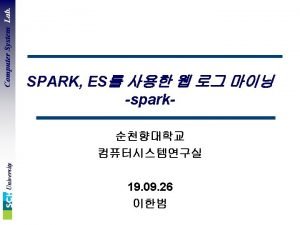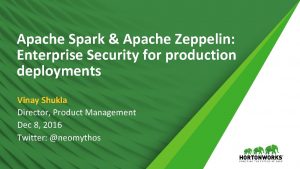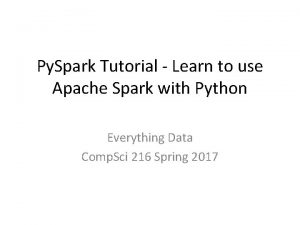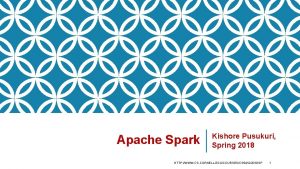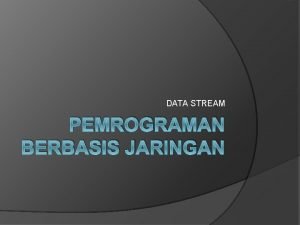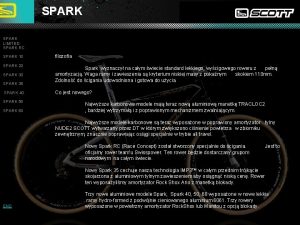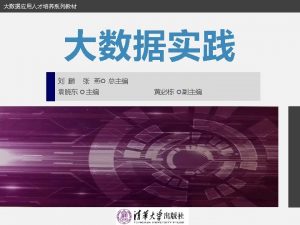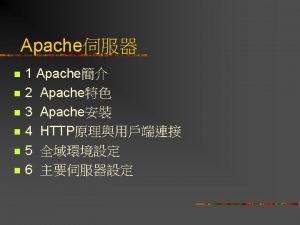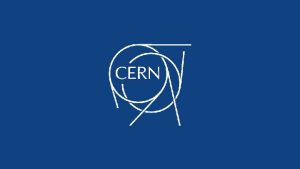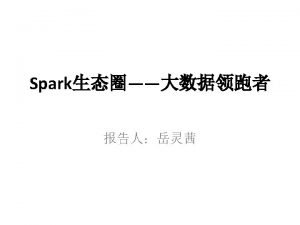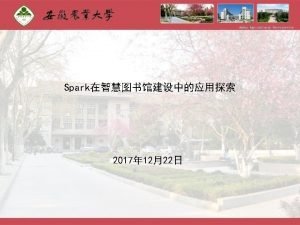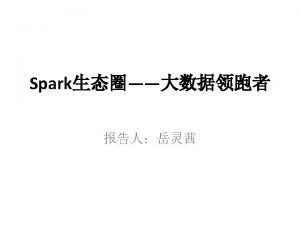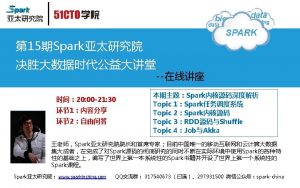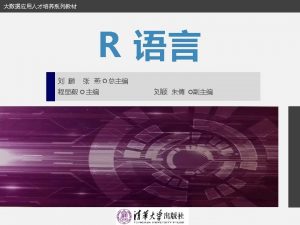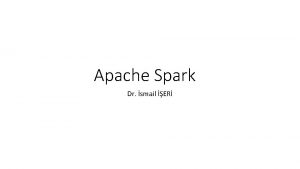Streaming data processing using Spark Apache kafka Agenda

















- Slides: 17

Streaming data processing using Spark Apache kafka

Agenda • • • 2 What is Kafka Why Kafka needed? Producers, brokers, consumers Topics, partitions, replicas, offsets Putting it all together

Apache Kafka • Originated at Linked. In, open sourced in early 2011 • Implemented in Scala, some Java • 9 core committers, plus ~ 20 contributors • http: //kafka. apache. org/ 3

Kafka? Linked. In’s motivation for Kafka was: • “A unified platform for handling all the real-time data feeds a large company might have. ” Features • High throughput to support high volume event feeds. • Support real-time processing of these feeds to create new, derived feeds. • Support large data backlogs to handle periodic ingestion from offline systems. • Guarantee fault-tolerance in the presence of machine failures. 4

A first look The who is who • Producers write data to brokers. • Consumers read data from brokers. • All this is distributed. The data • Data is stored in topics. • Topics are split into partitions, which are replicated. 5

A first look 6

Topics Consumer group C 1 Consumer group C 2 Consumers use an “offset pointer” to track/control their read progress (and decide the pace of consumption) Producer A 1 … Older msgs new Producer A 2 … Producer An Newer msgs Producers always append to “tail” (think: append to a file) Broker(s) 7

Partitions A topic consists of partitions. Partition: ordered + immutable sequence of messages that is continually appended to

Partition offsets Offset: messages in the partitions are each assigned a unique (per partition) and sequential id called the offset • Consumers track their pointers via (offset, partition, topic) tuples Consumer group C 1

Partitions #Partitions of a topic is configurable #Partitions determines max consumer (group) parallelism • Consumer group A, with 2 consumers, reads from a 4 partition topic • Consumer group B, with 4 consumers, reads from the same topic 10

Replicas of a partition Replicas: “backups” of a partition • They exist solely to prevent data loss. • Replicas are never read from, never written to. – They do NOT help to increase producer or consumer parallelism! • Kafka tolerates (num. Replicas - 1) dead brokers before losing data – Linked. In: num. Replicas == 2 1 broker can die

Why is Kafka so fast? Fast writes: • While Kafka persists all data to disk, essentially all writes go to the page cache of OS, i. e. RAM. Fast reads: • Very efficient to transfer data from page cache to a network socket • Linux: sendfile() system call Combination of the two = fast Kafka!

Kafka + X for processing the data? Kafka + Storm often used in combination, e. g. Twitter Kafka + custom • “Normal” Java multi-threaded setups • Akka actors with Scala or Java, e. g. Ooyala New additions: • Samza (since Aug ’ 13) – by Linked. In • Spark Streaming, part of Spark (since Feb ’ 13) Kafka + Camus for Kafka->Hadoop ingestion https: //cwiki. apache. org/confluence/display/KAFKA/Powered+By

Topics vs. Partitions vs. Replicas

Let’s recap The who is who • Producers write data to brokers. • Consumers read data from brokers. • All this is distributed. The data • Data is stored in topics. • Topics are split into partitions which are replicated.

Monitoring Kafka Nothing fancy built into but see: • https: //cwiki. apache. org/confluence/display/KAFKA/System+Tools • https: //cwiki. apache. org/confluence/display/KAFKA/Ecosystem Kafka Web Console Kafka Offset Monitor

Thank You…
 Pyspark sentiment analysis
Pyspark sentiment analysis Spark sql: relational data processing in spark
Spark sql: relational data processing in spark Patrick wendell
Patrick wendell Apache storm vs kafka
Apache storm vs kafka Apache kafka message queue
Apache kafka message queue Azure hdinsight vs databricks
Azure hdinsight vs databricks Apache spark concepts
Apache spark concepts Apache spark challenges
Apache spark challenges Apache spark presentation
Apache spark presentation Zeppelin spark 연동
Zeppelin spark 연동 Apache spark security
Apache spark security Apache pyspark tutorial
Apache pyspark tutorial Pyspark mappartitions
Pyspark mappartitions Apache spark vs spring
Apache spark vs spring Introduction to apache spark
Introduction to apache spark Apa itu data stream
Apa itu data stream Pete lumbis
Pete lumbis Agenda sistemica y agenda institucional
Agenda sistemica y agenda institucional

